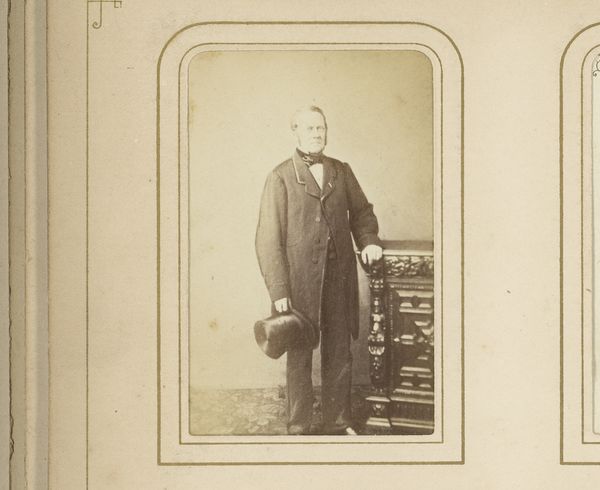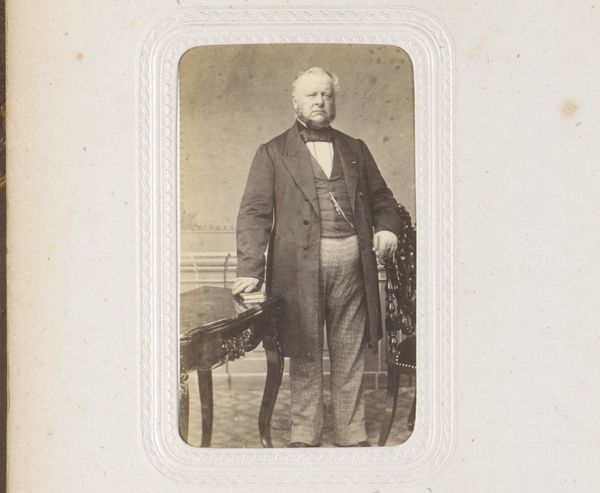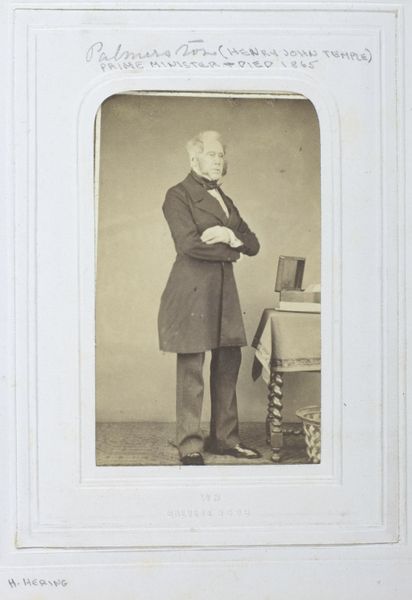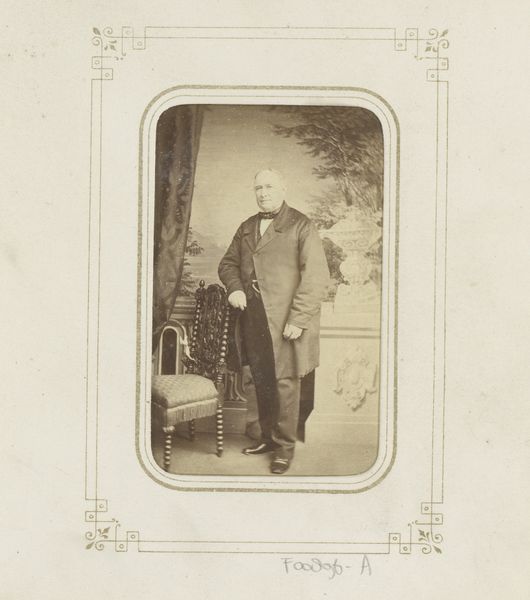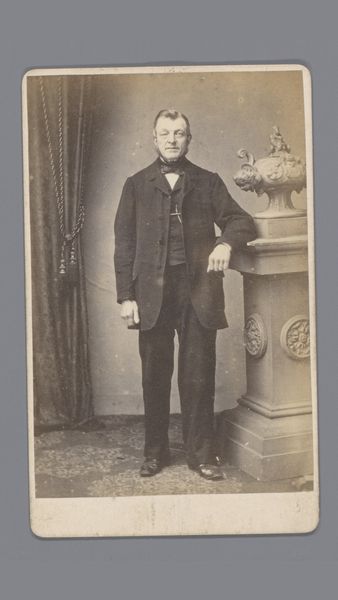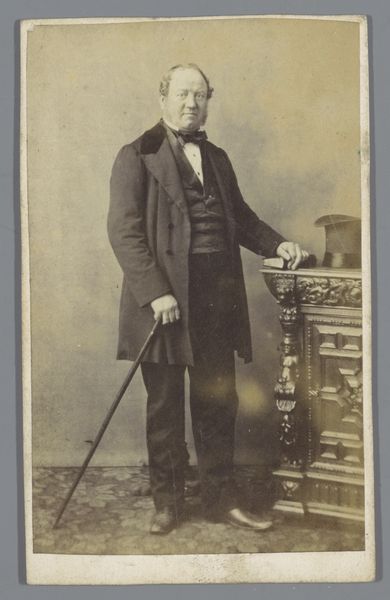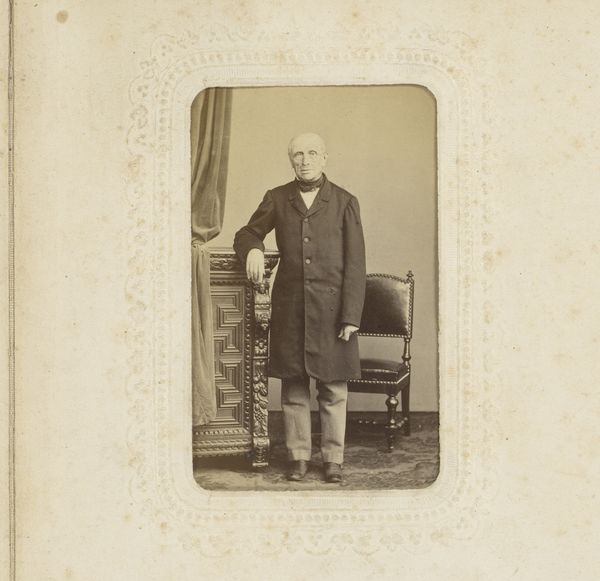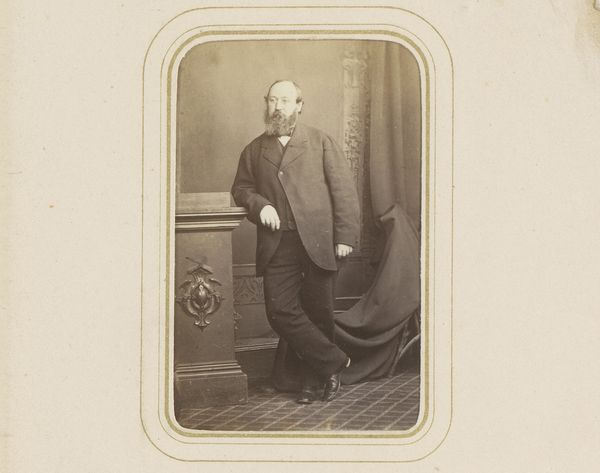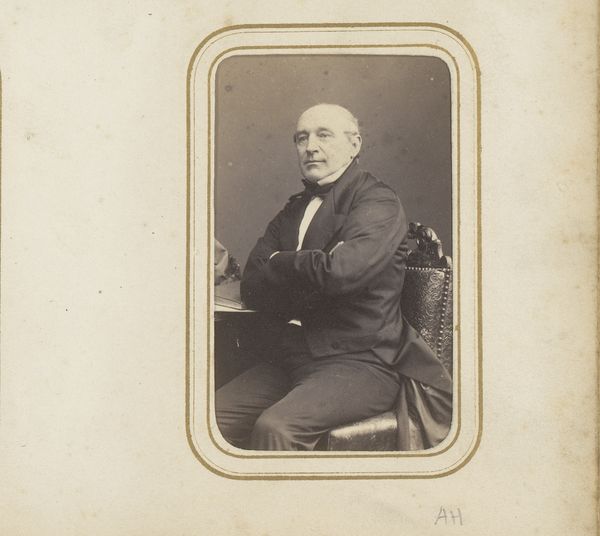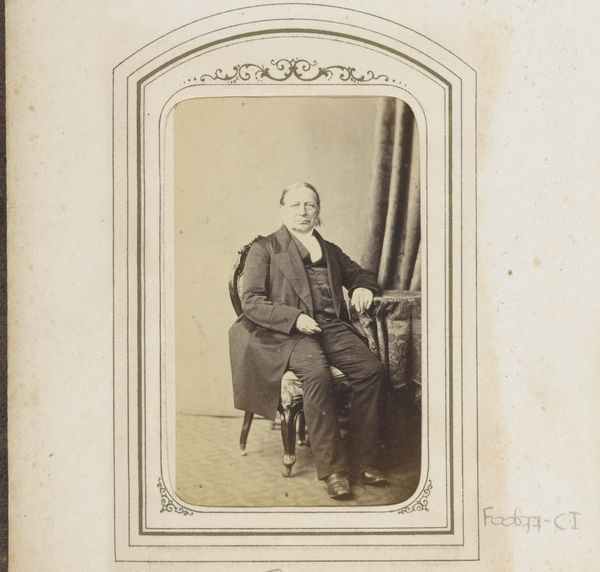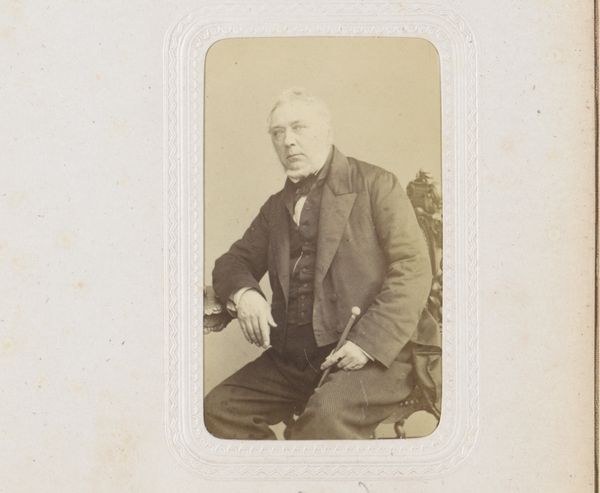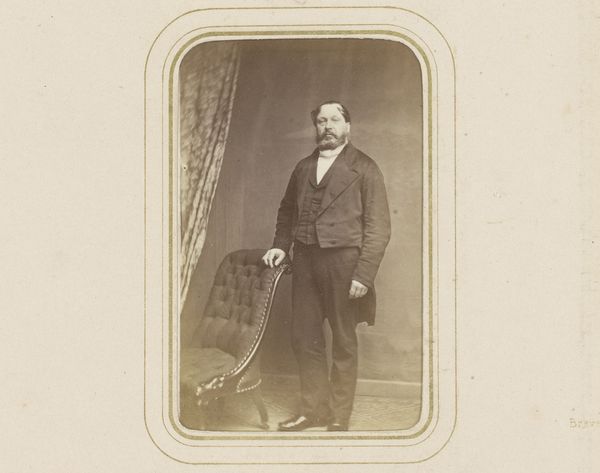
Portret van een man, staand bij een tafel waarop boeken liggen 1855 - 1865
0:00
0:00
mauritsverveer
Rijksmuseum
#
table
#
aged paper
#
toned paper
#
light pencil work
#
vintage
#
photo restoration
#
book
#
historical photography
#
old-timey
#
yellow element
#
19th century
#
watercolor
Dimensions: height 82 mm, width 50 mm
Copyright: Rijks Museum: Open Domain
Editor: This is Maurits Verveer's "Portret van een man, staand bij een tafel waarop boeken liggen," dating from about 1855 to 1865. It's at the Rijksmuseum. There's such a stillness about it, like a paused moment from a very different era. What catches your eye in this photograph? Curator: I'm struck by the symbolism inherent in the gentleman's pose and the carefully chosen objects around him. The books, of course, represent knowledge and learning. But consider how the sitter *chooses* to be presented – standing, not sitting, suggesting authority and active engagement with his world. Does that reading resonate with you? Editor: It does, especially since he’s not actually *reading* the books; they're almost props. So, is he conveying more than just intellect? Curator: Exactly! He's curating his own image. Look at the elaborate table and chair. They speak to a certain social standing, an aspiration towards refinement. This isn't merely a portrait, it is an archive, isn’t it, filled with carefully chosen emblems of self? How do you think such an archive speaks across time? Editor: I guess it shows what was valued then and what people wanted to project. But is there a danger in reading too much into these things? Curator: There is always a danger of anachronism. However, the persistence of such symbols throughout history—books, displays of wealth, posture—tells us about enduring human desires. Understanding their historical context gives them added meaning, don't you think? Editor: Definitely. I’ll remember that next time I see a portrait. It’s like unlocking a visual language. Curator: Precisely! And a language that continues to evolve and influence us today.
Comments
No comments
Be the first to comment and join the conversation on the ultimate creative platform.
